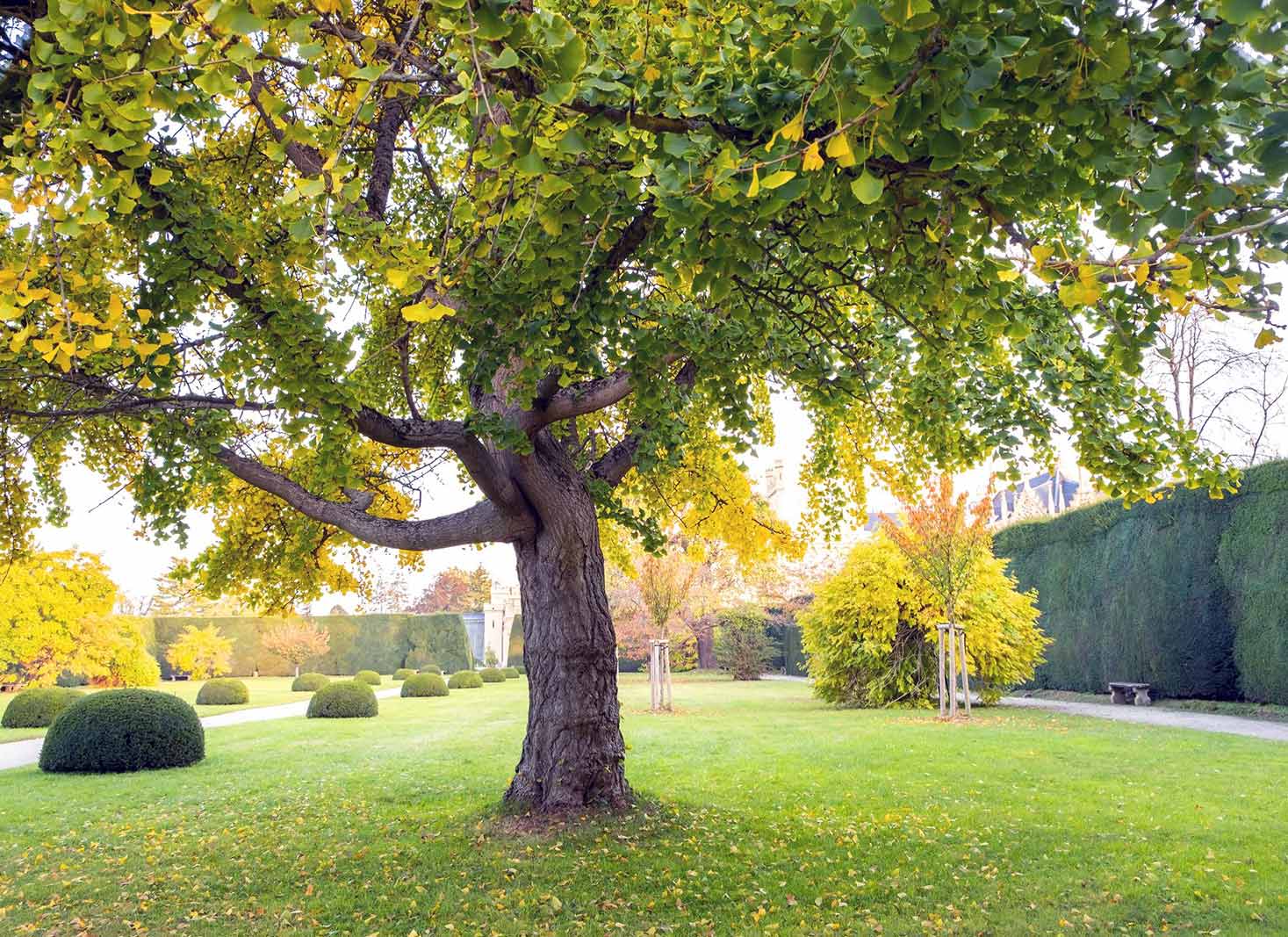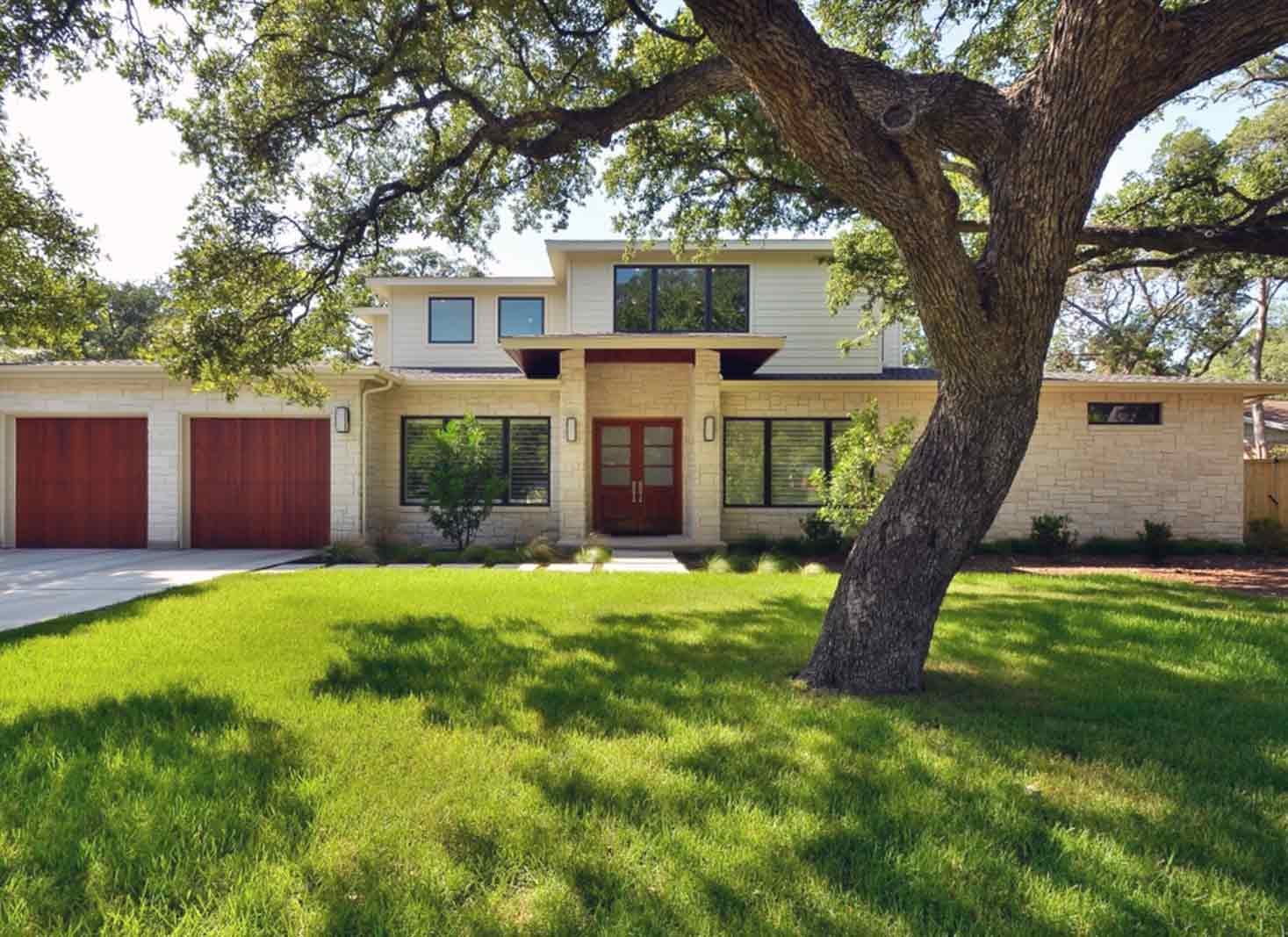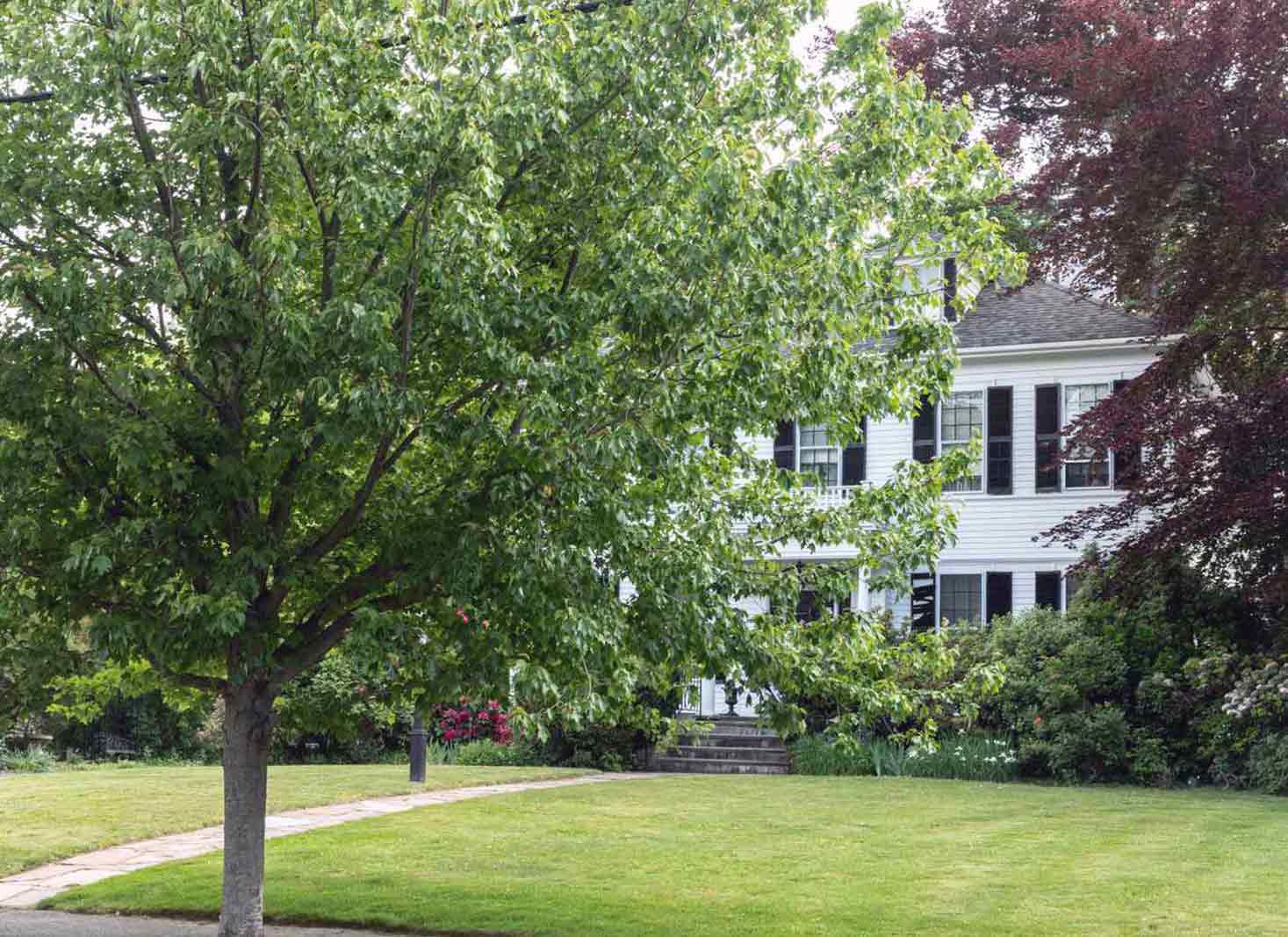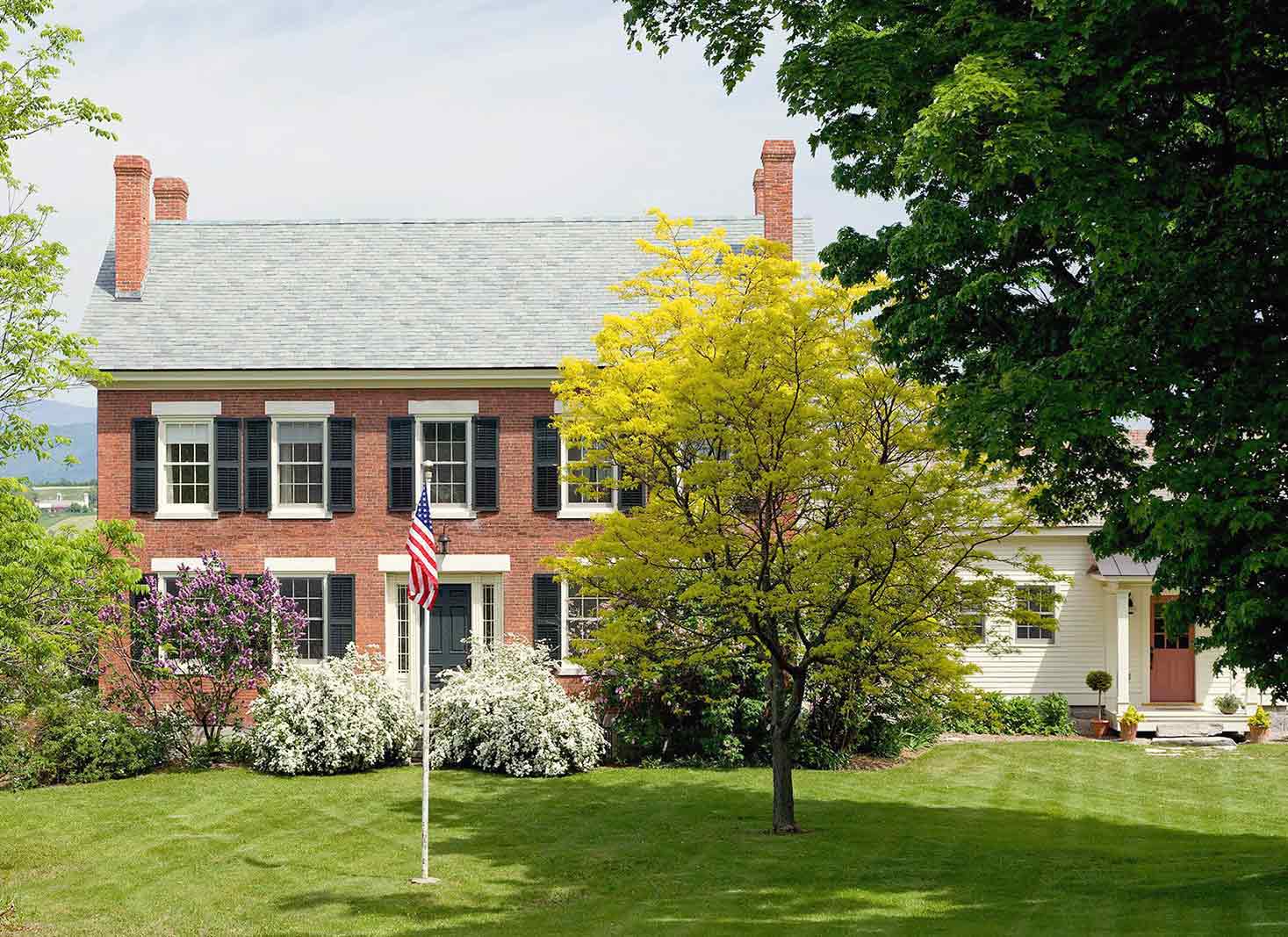Have you ever admired a beautifully landscaped property with lush, mature trees and thought, “I wish my yard looked like that”?
Choosing the right tree species that is native, disease-resistant, and aesthetically pleasing for your property can maximize its value. Pruning, trimming, and pest management are also very helpful.
By investing in the health and well-being of your trees, you can enjoy the numerous rewards they offer, both now and in the future.

What we cover
ToggleThe impact of mature trees on property value
It’s no wonder that numerous studies have found that properties with mature trees tend to sell for higher prices than those without.
A large, healthy tree not only contributes to your home’s curb appeal, but also offers environmental benefits such as improved air quality, decreased water runoff, and carbon dioxide capture.
Urban forest research has demonstrated that the presence of large trees in a neighborhood can positively affect property values on a larger scale, beyond just the individual property with trees.
Curb appeal enhancement

Well-maintained large trees can work wonders for a home’s curb appeal. Not only do they provide cooling shade and a sense of privacy, but they also create an inviting atmosphere that attracts potential buyers.
According to urban forest research, properties with well-maintained trees can experience an increase in value of up to 15%, thanks to the enhanced aesthetic appeal they provide.
Fruit trees, in particular, are an asset that can boost a property’s value by providing visual appeal, as well as a source of fresh, delicious produce.
Imagine stepping into your backyard and plucking a ripe, juicy apple straight from the tree. The enticing prospect of enjoying homegrown fruit can make a property stand out to potential buyers, further increasing its value.
Monetary gains
It’s not just about aesthetics; mature trees can also translate into real monetary gains for homeowners.
For example, properties with well-maintained palm trees or fruit trees in high-income neighborhoods can see a 10-15% increase in value compared to properties without trees.
The value of a mature tree itself can range from $1,000 to $10,000 and above, depending on its species and condition. The financial benefits of mature trees extend beyond the individual property as well.
A neighborhood with an abundance of healthy, large trees is likely to experience higher property values overall, as these green spaces contribute to a more attractive and desirable community.
Selecting the ideal tree species for your property
To maximize your property’s value, it’s essential to select the right tree species that will thrive in your specific location and contribute positively to your property’s aesthetics and value.
Choosing native, disease-resistant trees with aesthetic appeal is key to maximizing the benefits of mature trees on your property.
The right tree can enhance your home’s curb appeal, provide energy savings, and contribute positively to the environment.
Native trees
Planting native trees has a myriad of advantages when it comes to boosting property value. These trees are more likely to thrive in your region and require fewer resources for successful maintenance.
Studies conducted by the Arbor Day Foundation have shown that trees increase property value by up to 15%. Furthermore, it’s important to consider how trees affect property in terms of aesthetics and environmental benefits.
Additionally, native trees offer food and shelter to local wildlife, contributing to a healthy ecosystem. Native trees are tailored to their local environment, which reduces the amount of maintenance required.
Disease-resistant trees

Opting for hardy, disease-resistant trees is another crucial factor in maximizing property value. These trees have a higher chance of successful growth and development, thanks to their resilience to diseases and pests.
Growing disease-resistant trees can result in higher yields, diminished need for agrochemicals, and a longer life expectancy for the trees, ultimately helping to increase property value.
By choosing disease-resistant trees, you not only ensure the health and longevity of your trees but also protect your property from potential damage caused by pests or diseases.
A robust, flourishing tree can significantly enhance the value of your property, so selecting a disease-resistant species is a wise investment.
Aesthetic appeal
Aside from their potential monetary and environmental benefits, trees with attractive foliage, flowers, or fruit can significantly enhance the visual appeal of your property.
For example, the Black Cherry (Prunus serotina) features fragrant white flowers and small red cherries that attract wildlife. The Southern Magnolia tree is renowned for its large, creamy white blooms that emit a pleasant, rich fragrance.
Selecting trees with striking features can transform your property into an eye-catching oasis, capturing the attention of potential buyers and elevating your property’s value.
Energy savings and environmental benefits
Mature trees not only improve property value but also contribute to energy savings and environmental benefits.
By providing shade in the warmer months and protection from the wind in the colder months, trees can help reduce cooling and heating costs.
In addition to the financial savings, trees also play a vital role in enhancing air quality, decreasing water runoff, and capturing carbon dioxide, which is a factor in climate change.
Reduced cooling and heating costs
Strategically placing trees around your property can have a significant impact on your energy bills.
Large deciduous trees on the east and west sides of your home can provide shade during the hot summer months, keeping your home cooler and reducing the need for air conditioning.
In the winter, evergreen windbreak trees can help protect your home from harsh winds, lowering your heating costs.
By thoughtfully positioning trees on your property, you not only create a beautiful landscape but also save money on energy bills, making your property even more valuable and appealing to potential buyers.
Carbon sequestration
Trees are essential in the fight against climate change, as they absorb carbon dioxide from the atmosphere and help mitigate its effects.
Mature trees are particularly effective at carbon sequestration due to their larger size and longer lifespan. A mature tree can sequester up to 48 pounds of carbon over its lifetime, depending on its size, species, and location.
By planting trees and maintaining mature trees on your property, you not only increase its value but also contribute to a healthier environment for future generations.
Avoiding potential pitfalls: tree selection and maintenance
While having mature trees on your property can greatly increase its value, it’s essential to be aware of potential pitfalls associated with tree selection and maintenance.
Some trees can cause damage or require excessive maintenance, negating their positive impact on property value.
To maximize the benefits of mature trees, it’s crucial to avoid problematic tree species and ensure proper tree care through regular pruning, trimming, and pest management.
Invasive roots and messy foliage
Trees with invasive root systems or excessive leaf litter may seem like a good idea initially, but they can quickly become a headache for homeowners.
Invasive roots can damage your property’s foundation or even cause harm to neighboring properties.
Messy foliage, such as excessive leaf or fruit drop, can create additional maintenance work and detract from your property’s overall appeal.
To avoid these issues, it’s essential to research each tree species and choose those with non-invasive root systems and manageable leaf litter.
Professional consultation
Consulting with an arborist or landscaper can be invaluable when it comes to selecting the right tree species and ensuring proper tree care.
These professionals have specialized knowledge and experience in the care and treatment of trees, helping you make informed decisions about the best trees for your property.
By seeking professional guidance, you’ll ensure the health and longevity of your trees while maximizing their positive impact on your property’s value.
A well-maintained, flourishing tree is an investment that will continue to grow in value, providing financial and environmental benefits for years to come.
The role of proper tree care in maintaining property value

Proper tree care is essential for maintaining and even increasing your property’s value. Regular pruning, trimming, and pest management are vital for sustaining healthy trees and maximizing their positive impact on property value.
By ensuring that your trees are well-maintained and cared for, you can enjoy the many benefits they offer, from improved aesthetics and environmental advantages to increased property value.
Pruning and trimming
Proper pruning can improve the overall health of the tree by removing diseased or damaged branches, increasing air circulation and sunlight exposure, and stimulating strong growth.
Pruning and trimming can also enhance the aesthetic appeal and structure of the tree, prevent the formation of weak branches, and reduce the likelihood of falling branches.
For optimal results, trees should be pruned and trimmed using sharp, clean tools, with pruning cuts made at a slight angle just above a bud or branch collar.
The best time to prune and trim trees is in late winter or early spring when the tree is in its dormant state.
Pest and disease management
Monitoring trees for signs of pests or diseases is essential to prevent damage and maintain property value.
By catching infestations or infections early, you can take appropriate action to protect your trees and preserve their health and appearance.
Effective pest and disease management can help maintain the vitality of your trees, extend their life expectancy, and prevent the spread of pests and diseases to other trees and plants on your property.
By staying vigilant and addressing any signs of pests or diseases promptly, you can ensure that your trees continue to thrive, contributing positively to your property’s value and overall appeal.
FAQ’s
What trees add the most value to property?
Oak trees, such as the Shumard Oak, Live Oak, and White Oak, along with Magnolia Cucumber Tree, Sugar Maple, Red Maple, Southern Magnolia, and Black Tupelo, offer high value for the property.
Does cutting down trees affect property value?
Removing a tree from your property could help maintain its value if the tree is in poor health or poses a risk to your home.
Healthy, maintained, and correctly planted trees can help boost your curb appeal and thus improve your property value.
What is the value of trees in a neighborhood?
Trees provide valuable environmental benefits in neighborhoods, such as breaking the force of rainfall to reduce flooding and preventing soil erosion. Their roots also help hold the soil in place, improving water quality.
How do you determine the value of a tree?
To determine the value of a tree, one must measure its circumference and height in inches, then refer to a table to find the basic value associated with its type.
Finally, use the equation Tree Value = Circumference x Height x Basic Value to calculate the value of the tree.
How can trees help reduce energy costs?
By shading homes in the summer and acting as windbreaks in the winter, trees can help reduce cooling and heating costs.
They also provide a natural habitat for birds and other wildlife and can help reduce air pollution by absorbing carbon dioxide and other pollutants.
Trees can also help reduce noise pollution, providing a buffer.




